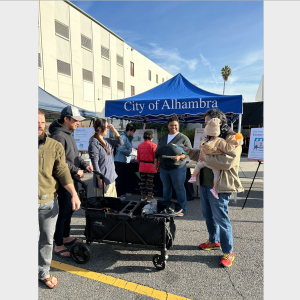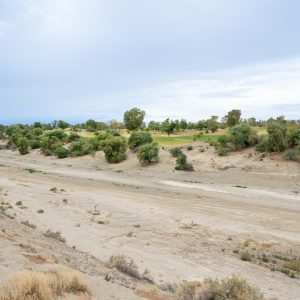 View Winners →
View Winners → Amid Growing Debate, Pasadena Finds Itself at Crossroads Over Housing Development & Preservation


The failed 253 S. Los Robles project, the latest development up for vote in city council. – Courtesy photo / City of Pasadena
By Evan V. Symon
With an upcoming council meeting over developments on North Madison Avenue, and several more on the way, the City of Pasadena is facing a larger debate over new buildings in the city.
In the wake of the 253 S. Los Robles project defeat, the City of Pasadena has found itself in the uncharted territory of the City Council voting against previously approved housing developments. With many other approved developments coming before the City Council soon, a debate has grown over whether these new projects are a help or a hindrance to the city.
On one side of the issue is preservation and not wanting large developments to be built in Pasadena. Andrew Salimian, preservation director of Pasadena Heritage, one such group that is addressing the preservation and change in Pasadena, told the Independent of worries over new development in Pasadena.
“We have concerns over a lot of development in Pasadena,” stated Salimian. “It’s not keeping with the General Plan, and the City Council ran into it.”
Groups such as Pasadena Heritage are also worried about the impact new developments can have after being built. “At South Robles, they added a parking lot and height,” said Salimian. “That adds a lot of impact on noise and traffic. Pasadena wasn’t made to deal with that.
“Our concern for development is coming from exemptions,” continued Salimian. “The state gives permits to ignore development standards. There’s a housing crisis. Like most residents, we aren’t opposed to height or density, but we need to keep with Pasadena being unique. Tall buildings work next to others with similar height but not next to single family houses.”
John, a developer with past projects in Pasadena who agreed to speak on anonymity, told the Independent, “I can see what citizens living in Pasadena think, but this is astounding. We have a housing crisis here. And we abide by city rules by putting in low or very low income units in.”
“Look at the issues we have,” continued John. “Homelessness, not enough affordable housing, young professionals not being able to find a place to live, wealthier individuals not being able to find a place close to downtown. Larger scale housing is a solution that knocks all of these problems out of the park.”
John noted that developers also face other problems, such as a loss on units being designated for lower income people.
“We also understand about history, and having a city not lose its luster,” added John. “We’ve worked with numerous cities, and many have some of the same concerns. But housing should take a bigger role. We’re providing a solution, while we also take a dent in profits.”
However, John also spoke to how current state laws are beneficial to developers.
“The laws are in our favor right now,” admitted John. “We are using what is legally given to us to provide housing to the people of Pasadena.”
For the City of Pasadena, they are currently in the middle between preservation and development. With many being torn on how the city should respond to the housing crisis, the city has implemented or proposed a number of measures.
“The housing crisis is a real crisis,” said Planning and Community Development Director David Reyes. “We’ve done a lot to increase housing and other cities have noticed. SB 50 copied us on what we’re trying to do.”
“Rent costs have not improved since the recession,” stated city Senior Planner Andre Sahakian. “And the number of units needed to address the issues has gone up; 3.5 million units need to be built in California. Only 100,000 have been built.”
“Eighty-one percent of lower-income Californians are rent burdened,” continued Sahakian. “A little over half are severely rent burdened. That’s where we are now.”

Over 80% of California’s lower income population are currently rent burdened. – Courtesy photo / City of Pasadena
In response, the City of Pasadena has enacted certain measures, such as the Inclusionary Housing Ordinance, which sets aside 15% of units in a development to low or very low income tenants. The city has also made sure to focus where large developments can go, with the city center and areas around metro stations and highways being the focus. This serves to lessen the impact of many issues that would otherwise affect residents if built elsewhere, such as traffic.

87% of current projects are within half a mile of a Metro station, which falls in line with Pasadena’s housing plan. – Courtesy photo / City of Pasadena
However, with California law giving leeway to developers over local building laws, it’s become harder to deny developers.
“When an application comes in, and it meets all regulations, it’s approved,” said Reyes.
The city works with these laws, giving concessions such as height to get more affordable units. But even with concessions, state law has overridden local law, and the growth in permits and developments has continued.
“We expect change in neighborhoods, but we got changes way out of scope of the community and City Council,” affirmed Reyes, “It was not expected.”
In response to the issue, the Planning and Community Development Department will be proposing new measures soon.
“What we’re proposing soon is updating the Inclusionary Housing Ordinance,” conveyed Reyes. “This would raise the amount of low income housing in a new building from 15% to 20%. We would also remove the trade down provision, which means they can’t take it down to 10% by adding additional density.”
“We have to enforce state laws, but we didn’t want to give up a lot,” added Reyes. “There are communities here and aesthetics. We’re in a situation where we aren’t getting much more. We’re actually getting gamed over the 15% we’re asking with the bonus laws.”
“Developers are 100% absolutely taking advantage of the situation.”
Reyes also noted that high rise development seen in nearby cities such as Glendale and Burbank could not happen in Pasadena, due to historic districts, over 30 historic neighborhoods, protected buildings, and regulations that keep the aesthetic.
Despite such a complicated issue, there is strong support for the city and its current situation.
Salimian stated “We’re supportive of the city. At point, we see the city is frustrated with the state laws at odds with city laws.”
Speaking on the same issue, John said “We respect the position the city is in, and, believe it or not, we respect locals who come to meetings and protest and things like that. We’re following the law and the city is following the law. It’s as simple as that.”
With the City of Pasadena proposing greater building limits, and the state not changing its current laws on housing and building limits in the near future, Pasadena potentially faces even more scrutiny in the coming months over similar projects.
The growing debate and complicated nature of the development issue was summed up by local resident Audrey Fletcher, who has a “keen interest” in the issue. “So we either help those who need a place to live and clutter parts of the city with those tall buildings, or we don’t allow those buildings and keep Pasadena as it is, but we see more people struggle and go in the streets,” Fletcher told the Independent. “Do you think there’s an easy answer?”




































































































